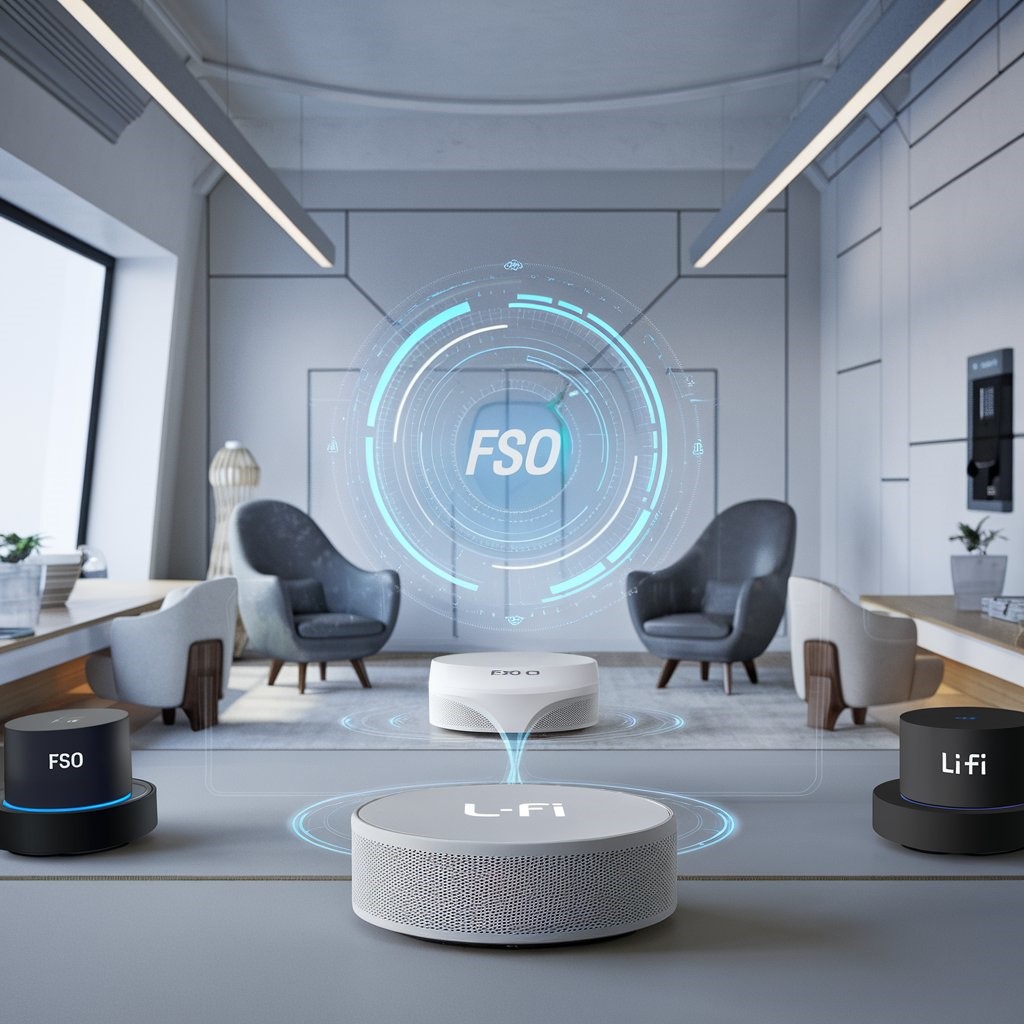In an era where digital communication is paramount, the quest for faster, more reliable, and secure data transmission is unending. Free Space Optics (FSO) and Visible Light Communication (VLC), commonly known as Li-Fi, are at the forefront of this technological evolution. Both technologies harness the power of light to transmit data, offering unique opportunities across various sectors and reshaping how we think about connectivity.
The FSO & VLC/Li-Fi market size was valued at USD 2.78 billion in 2024 and is projected to reach USD 7.39 billion by 2029, growing at a CAGR of 21.6% from 2024 to 2029. The primary factor driving the growth of VLC/Li-Fi market is the faster and safer data transfer. Data transmission through VLC/Li-Fi is more secure and achieves high data rates compared to conventional wireless technologies such as Wi-Fi, Bluetooth, and Worldwide Interoperability for Microwave Access (WiMAX), which use radio waves for communication. Since light waves do not penetrate walls, they cannot be intercepted and misused. A networking speed of 100 Mbps can easily be obtained with the use of the VLC technology using LEDs.
Free Space Optics and Li-Fi Opportunities Include :
Free Space Optics (FSO) involves the transmission of data through light beams over distances ranging from a few meters to several kilometers. Utilizing lasers or LEDs, FSO can achieve data rates comparable to fiber optics without the need for physical cabling. This technology is particularly valuable in environments where traditional cabling is impractical or cost-prohibitive.
Visible Light Communication (Li-Fi), on the other hand, leverages LED lighting to transmit data by modulating light intensity. This modulation allows for high-speed data transfer through the visible light spectrum, often exceeding the capabilities of conventional Wi-Fi. Li-Fi can be integrated into existing lighting systems, making it a versatile solution for modern connectivity needs.
Download PDF Brochure @ https://www.marketsandmarkets.com/pdfdownloadNew.asp?id=946

Key Opportunities in Various Sectors
- Telecommunications and Internet Service Providers: FSO can be a game-changer for telecommunications companies seeking to expand their infrastructure. By providing high-speed connections without the need for extensive cabling, FSO can help bridge the digital divide in underserved areas. Additionally, Li-Fi can enhance existing Wi-Fi networks, offering faster and more reliable connections in densely populated environments, such as urban centers and high-rise buildings.
- Healthcare: The healthcare sector stands to benefit significantly from FSO and Li-Fi technologies. Hospitals can implement Li-Fi to facilitate secure, high-speed data transfer without interfering with sensitive medical devices. FSO can connect different hospital buildings, ensuring seamless communication and data sharing, which is crucial for patient care and operational efficiency.
- Smart Cities: As cities become increasingly connected, FSO and Li-Fi can play pivotal roles in the development of smart city infrastructure. FSO can facilitate communication between various city services, such as traffic management systems, surveillance cameras, and environmental sensors. Li-Fi can enhance public transportation by providing passengers with high-speed internet access through streetlights and in transit vehicles, improving the overall commuting experience.
- Education: Educational institutions can leverage Li-Fi to provide students with reliable internet access in classrooms and libraries. By utilizing existing LED lighting, schools can create an enriching learning environment without the need for extensive wiring. FSO can connect campus buildings, facilitating data sharing and communication between departments.
- Military and Defense: The secure nature of FSO makes it particularly suitable for military applications. FSO can facilitate rapid and secure communication in sensitive operations where traditional communication methods may be vulnerable to interception. Li-Fi can also be deployed in military vehicles and command centers to ensure high-speed data transfer without compromising security.
Challenges and Solutions
While the potential of FSO and Li-Fi is immense, several challenges must be addressed for widespread adoption.
- Environmental Limitations: FSO can be affected by atmospheric conditions such as fog, rain, and snow, which can disrupt the laser signals. To mitigate this, advancements in adaptive optics and error correction algorithms are being developed to enhance the reliability of FSO systems under various weather conditions.
- Line of Sight Requirement: Both FSO and Li-Fi industry require a clear line of sight for optimal performance. Innovative solutions, such as the use of mirrors or beam steering technologies, are being explored to extend the range and applicability of these systems in environments where obstacles may interfere with the light path.
The Future of FSO and Li-Fi
The future of Free Space Optics and Li-Fi is promising, with ongoing research and development poised to unlock new opportunities. As the demand for high-speed, secure, and reliable data transmission continues to grow, these technologies are well-positioned to meet the needs of various industries.
The integration of FSO and Li-Fi with emerging technologies such as 5G, the Internet of Things (IoT), and smart devices will further enhance their capabilities. As cities evolve into smart ecosystems and organizations seek innovative solutions for connectivity, FSO and Li-Fi will play integral roles in shaping the future of communication.
Free Space Optics and Li-Fi technologies offer a wealth of opportunities that can transform connectivity across multiple sectors. From enhancing telecommunications infrastructure to enabling secure communication in healthcare and military applications, the potential is vast. As challenges are addressed and advancements continue, FSO and Li-Fi companies are set to revolutionize the way we connect, paving the way for a more efficient and interconnected world. The shift towards light-based communication is not just a technological upgrade; it represents a paradigm shift in how we approach data transmission and connectivity in our increasingly digital lives
